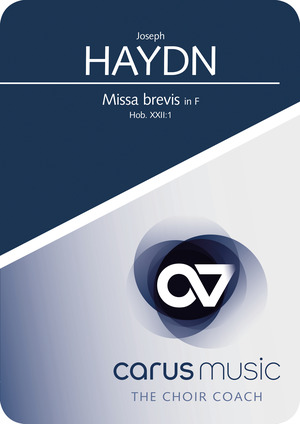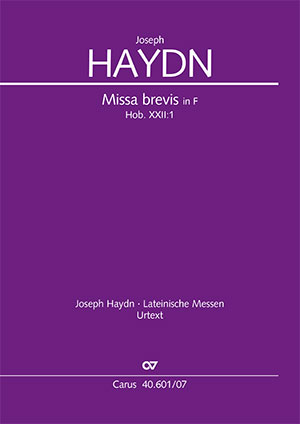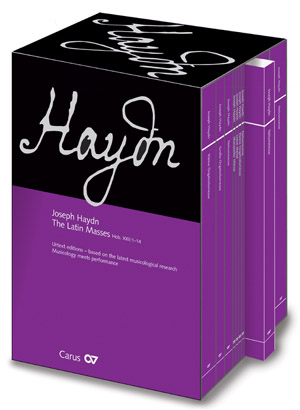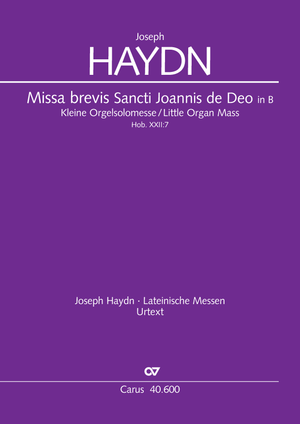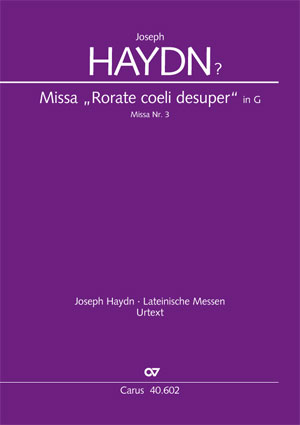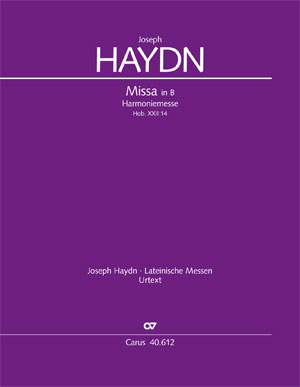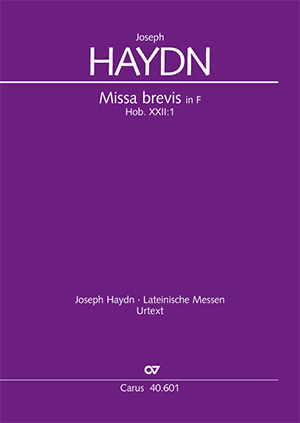
Despite all of its folk-line simplicity of melody, Haydn's first mass contains a pious note that, just like its youthful verve, still was to hold fascination for him in his late years when, in 1805, he re-orchestrated his first work. The first version of the mass is considered to have been composed in 1749 or 1750. It was around the same time that Pope Benedict XIV treated questions concerning church music in his encyclical "Annus qui" in which he condemned the frequently operatic style of church music and demanded liturgical music that revealed an awareness of its religious purpose and that sought to fulfill it with simple means of musical expression. In its liturgical attitude Haydn's first mass is anchorded in this point of view (that to a great extent corresponded to the general standpoint of the churches of the eighteenth century).
Purchase
Additional product information
-
Composer
Joseph Haydn
| 1732-1809As Kapellmeister to Prince Esterházy, Haydn composed numerous instrumental works and various operas, as well as making important contributions to the genre of church music, including fourteen Latin masses, of which only twelve are authentic or complete; these are complemented by motets and offertories, two important Te Deum settings, two Salve Reginas, a Stabat Mater, and the different versions of the Sieben Worte des Erlösers am Kreuze. The masses were composed continually between 1749 and 1802, except for the years 1783–1795, and therefore constitute the genre with which Haydn was occupied over the longest period of time. The six (authentic or complete) masses composed before 1782 are stylistically very different, and as well as short Missae breves there are more extended masses with rich orchestral scoring; by contrast the six so-called late masses, written from 1796 onwards, form a comparatively homogeneous group of more extensive works scored for large forces. With his two great oratorios Die Schöpfung (The Creation) (1798) and Die Jahreszeiten (The Seasons) (1801) Haydn established the tradition of the German oratorio for middle-class music making. Personal details
-
Editor
Willi Schulze
| 1909-2005
Reviews
Eine echte Überraschung. Von der ersten Messe Haydns hatte ich ein unbedeutendes Frühwerk erwartet. Dabei hat diese Messe insbesondere durch die originelle Besetzung einen großen Seltenheitswert. Die wichtigsten Akteure sind die beiden Sopransolisten (sonst gibt es keine Soli). Sie singen durchweg und den ganzen Text. Oft gemeinsam und wenn, dann nur unisono mit dem Chor, der dadurch bestärkende Wirkung erhält. Dann wieder in virtuosen und schnellen Koloraturen, teilweise terzelnd, teilweise in verschiedener Bewegung sich die Bälle zuwerfend. Das macht Spaß! Wenn Sie also zwei gute Sopranistinnen haben, die gut miteinander harmonieren und Freude am Duett haben: Führen Sie diese Messe auf!
Kirchenmusik im Bistum Limburg, 2/2010Frequent questions about this work
 There are no questions and answers available so far or you were unable to find an answer to your specific question about this work? Then click here and send your specific questions to our Customer Services!
There are no questions and answers available so far or you were unable to find an answer to your specific question about this work? Then click here and send your specific questions to our Customer Services!


